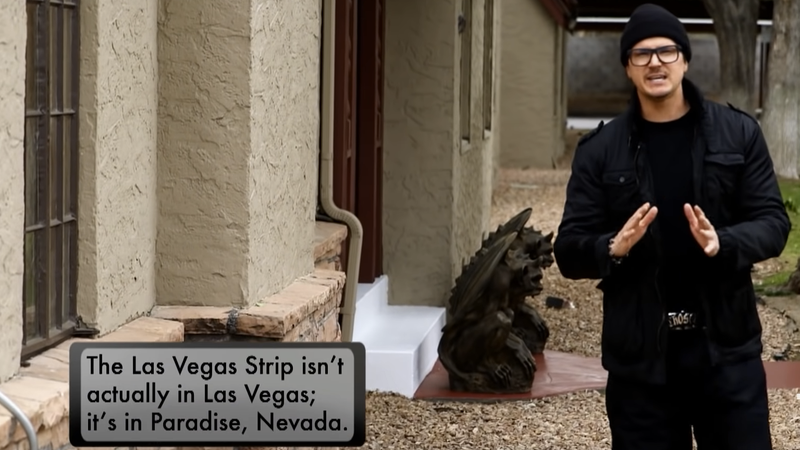Read this: Why did the Travel Channel die and become Ghost Adventures HQ

- Oops!Something went wrong.Please try again later.
- Oops!Something went wrong.Please try again later.
“Did you hear something? No, seriously, dude, what was that? Oh, god! It’s the spookiest, scariest, most ghoulish of television networks: Travel Channel!”
Over the last 15 years, something strange happened to the Travel Channel. Once a destination for aspiring tourists looking to see where they could get the best artichokes in Italy is now a stop-shop for men screaming about heat signatures, magnetic pulses, and infrared sensors in an empty room where clearly nothing is happening. It’s just dark. In 2008, Ghost Adventures premiered on the Travel Channel and forever changed the course of vacation entertainment. Suddenly and without warning, the Travel Channel began possessing television sets in hotel rooms, forcing viewers to watch reality shows about visitors from another plain of reality.
Read more
As <em>Halloween Ends</em>, let's rank the best performances of Jamie Lee Curtis
The 20 biggest game-changing moments from <em>The Walking Dead</em>
How did this happen? Thankfully, we have an answer. The Washington Post’s Hannah Sampson examined the rise of the Ghost Channel in a new report. Analyzing the strange surge of paranormal entertainment on a channel whose name promises something very different, Sampson details its quick and steady rise to the top of the ratings. But not everyone is dying to watch this version of destination-based escapism.
In 1987, the TWA airline launched the Travel Channel as a network “devoted exclusively to travel and leisure.” But in the late-90s and early-2000s, the channel shifted, adding some paranormal offerings to its lineup. “Now it’s kind of like a joke,” said Mark Wolters, a travel vlogger and teaching associate professor at the University of Illinois at Urbana-Champaign’s Gies College of Business, told the Post. “Oh, I remember the Travel Channel. Remember Samantha Brown when she was on there, and Anthony Bourdain and No Reservations? Those were the days.”
The phenomenon isn’t so different from what happened to The Learning Channel, better known as TLC, which mutated from educational shows into the glut of 90 Day Fiancé spin-offs we know and love today. However, Travel Channel, recently rebranded as TRVL Channel because ghosts eat vowels, insists, “We have a rotation of programming, which delivers content audiences want to watch.” Though anyone that’s tried watching TRVL would argue otherwise, and even more don’t seem to mind.
“That was the most obvious slam dunk for me,” Jeff Belanger, an author, who has worked as a writer and researcher on Ghost Adventures, said of Ghost Adventures airing on TRVL. “Of course the Travel Channel.”
It’s not that hard to tell what happened. Ghost Adventures was a much bigger hit than the network’s various eating tours. So TRVL decided to double down, adding a slew of cleverly titled ghost-related projects, like Ghost Brothers, Ghost Town Terror, and Ghost Nation. Each of these shows is cheap to produce, considering the effects budget is mostly inverting colors on an old house. But, logistically, it’s all the same: men enter a room, hear nothing, scream, and exit. And that’s been a TV show for about 15 years.
The whole story does voice some complaints and validates some enjoyment (you’re definitely not alone if you like this stuff). Though, maybe there’s a limit on how much ghost-hunting TV viewers actually need.
Read the whole thing over at The Washington Post.
More from The A.V. Club
Sign up for The A.V. Club's Newsletter. For the latest news, Facebook, Twitter and Instagram.

